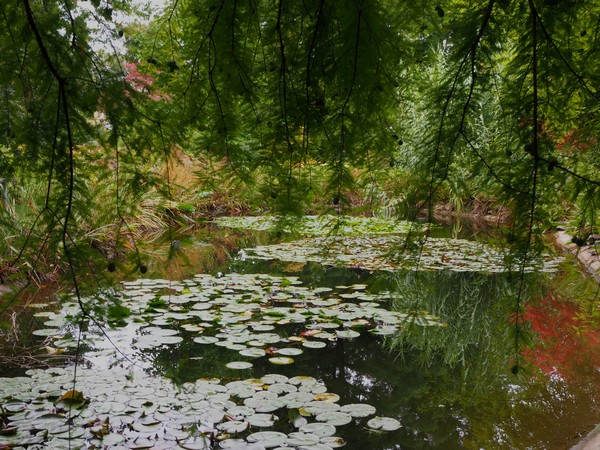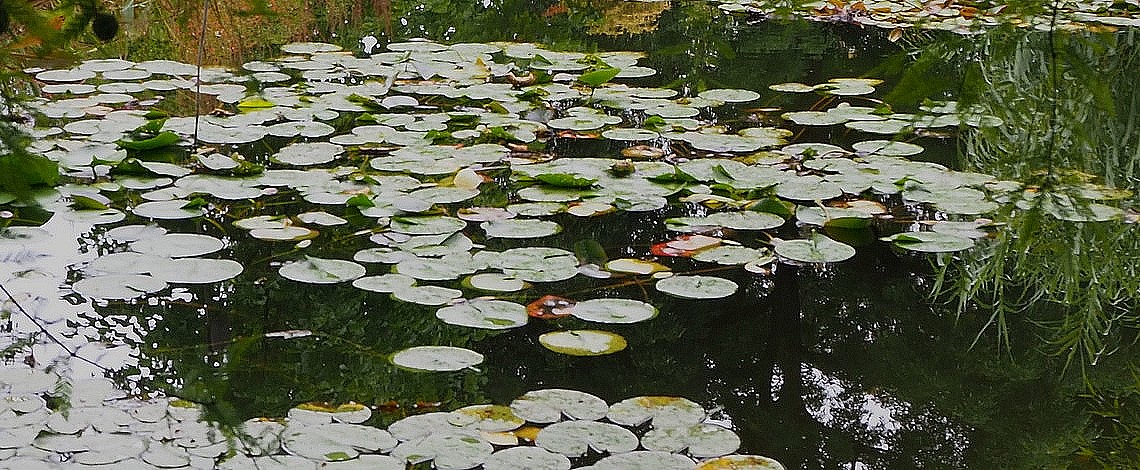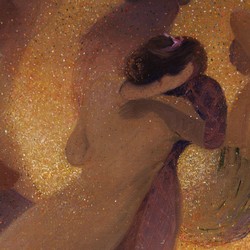
Sometimes the way a song is interpreted make us to stop and to rediscover it. Because there's something different, we hear details that we didn't previously hear in other versions; sometimes are more obvious, like unusual tempi, and sometimes more intangible: the accent on a word, a colour, the particular way the piano plays a note... And I wanted to talk about this, this week, about a song rediscovered thanks to a different interpretation.
Johannes Brahms published Acht Lieder und Gesänge, Op. 57 in 1871; he had set into music one more time poems by Georg Friedrich Daumer, his favourite, the poet who he most musicalized. Unbewegte laue Luft [Motionless, tepid air] is the eighth and last Lied of the collection, and the poem is taken from Frauenbilder und Huldigungen [Woman portraits and homages], published in 1851. In its sixteen verses, a single stanza, we find elements typical of Orientalism, common in the poetry of an expert on the subject such as Daumer: a garden at night, two separate lovers, and the desire to be together; these verses may be words that Suleika addresses to Hatem, or Hatem to Suleika, to mention characters familiar to Lied lovers. However, this time the expression of desire is more explicit than it used to be at the time; in fact, this collection of poems was one of Daumer's problematic works. The choice of Brahms, a central figure in music, was daring, and I like to imagine him smiling when he read the comments he received about his last set of songs ("Johannes, maybe this time you went a little too far?")
Brahms's score has two distinctly separate sections; the first, indicated as langsam [slow], covers the first four verses; the second, indicated as lebhaft [animated], goes from the fifth verse to the end of the song. But if we look at it more closely, Brahms groups the verses by twos, and separates these groups with more or less long solo piano measures, which introduce the changes of character that I'll try to explain to you now.
The music of the first two verses honours the motionless air with which the poem begins. There's hardly movement, but we feel a languor that takes us to the calm of the garden, a calm that Brahms accentuates by repeating the second verse. We hear a certain movement in the next two verses, especially on the piano; perhaps the water splashing, because Brahms repeats the fourth verse, where the fountain is mentioned. The next measures of the piano lead us to the second part of the song, and they do so in a way that makes us think the Lied is ending.
But the piano soon will foresee the contrast with the second part of the piece: the fifth verse arrives and the desire bursts into music almost triumphantly. The next two verses, seventh and eighth, have a structure similar to the previous two, and also share the musical structure. Then arrive the two questions that the poetic voice asks the lover and, as in the case of the four previous verses, they share musical material. Note that we hear again the melody we heard at the beginning of the song, but much faster.
Finally, the last two verses of the poem, which are also the climax of the song, and Brahms begins by repeating the first words of the penultimate verse, "Komm, or komm". But the Lied doesn't end here. After this exalted request, the last two verses are repeated, now with a calm character and again reprising the initial melody.
Brahms' composition, with its continuous changes, gives the performers much freedom to express the feelings of poetic voice, and the version we will listen, that of Anna Lucia Richter and Ammiel Bushakevitz, presents extreme tempi. The really slow first part caught me; the first two verses, so static, made me think of two Lieder, Schubert's Meeresstille, and Strauss's Ruhe, meine Seele; the calm has something disturbing in both. From there, every, let's say, mini section, is very contrasted, and desire is expressed with vehemence. At the same time, however, the Lied also conveys sorrow, a feeling, emphasized mostly by the piano, which may be concealed in the poem; in the Orientalist tradition, lovers are separated by long distances, by difficult circumstances or even by death. That being so, the poetic voice knows that the lover will not come (and, in this sense, the sadness would be similar to that conveyed by some of Schubert's Ständchen versions).
I listened many times to this interpretation, which I very much like, over the last few days, but I also listened to many others (a side effect of listening to a different version). Some artists play the piece at a more uniform tempi, and we can easily find versions that are half a minute or even a minute shorter. The version I am suggesting is very passionate, but there are others that seem to gloss over the text; between this two options, there are others for all tastes. So, I invite you to listen and enjoy Richter and Bushakevitz's performance, and also to browse, listen and enjoy other. And, if you allow me the suggestion, while you're browsing, look for the version of Lorraine Hunt Lieberson and Peter Serkin.
Tiefe Ruhe der Natur;
Durch die stille Gartennacht
Plätschert die Fontäne nur.
Aber im Gemüte schwillt
Heißere Begierde mir,
Aber in der Ader quillt
Leben und verlangt nach Leben.
Sollten nicht auch deine Brust
Sehnlichere Wünsche heben?
Sollte meiner Seele Ruf
Nicht die deine tief durchbeben?
Leise mit dem Ätherfuß
Säume nicht, daherzuschweben!
Komm, o komm, damit wir uns
Himmlische Genüge geben!
Nature, deeply at rest;
Through the still garden-night
Only the fountain splashes.
But in my heart there surges
Hot desires,
And in my veins swells
Life, and a longing for life.
Should not also your breast
Be lifted by longing wishes?
Should not the cry of my soul
Reverberate deeply in yours?
Softly, with ethereal steps,
Do not tarry to float to me!
Come, oh come, so that we might
Give each other heavenly satisfaction!
(translation by Emily Ezust)



 One of...
One of...












Comments powered by CComment